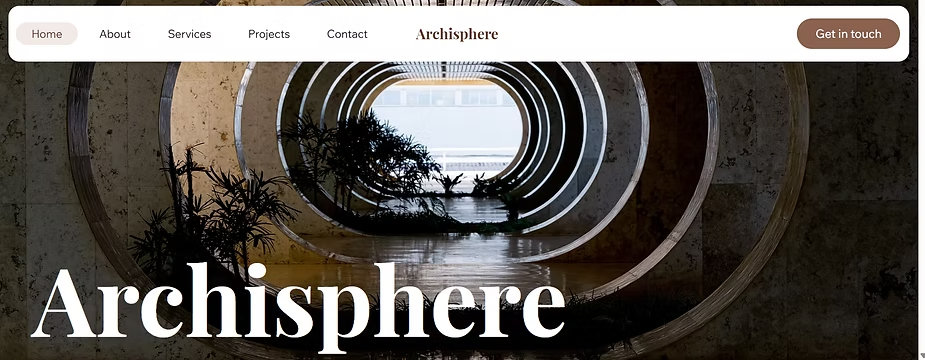Design That Sells: Use This Wix Template to Showcase Your Interiors
- Ashwani Agarwal

- Feb 17
- 4 min read
Updated: Jun 2
First impressions matter — and your website is often the first room clients step into.
Whether you’re championing a cause, running an awareness campaign, or promoting a grassroots movement, your message deserves more than just flyers and fleeting posts. In today’s digital-first world, visibility is viability. This post serves as your comprehensive guide to launching a high-impact campaign website using Wix. From understanding why a strong web presence is essential to budgeting, selecting the right templates, and mastering engagement strategies, we’ve got you covered to help you grow with confidence. If you’re ready to amplify your message, attract supporters, and convert visitors into action-takers, you’re in the perfect place. Let’s build something meaningful.
In the fiercely competitive design industry, your website is more than just an online presence — it’s your first handshake with potential clients. For interior designers, a website should showcase your unique style while providing smooth navigation and clear information. The Interior Design template from Codencanvas blends stunning visuals with user-friendly features, making it an ideal choice to elevate your portfolio. In this post, we’ll highlight the template’s top features, how easy it is to customize using Wix Studio, and introduce other templates offering alternative design vibes. Plus, you’ll get a sneak peek at a related blog to help maximize your website’s impact.
Designed with Designers in Mind
The Interior Design template is thoughtfully crafted to highlight your creative projects in a refined and elegant way. The balanced use of whitespace and striking visuals ensures your work grabs attention immediately.
Homepage that Captures Attention: The homepage layout guides visitors through your latest projects and services using beautiful full-width images and clear calls to action.
Project Galleries: Organize your portfolio by project types, styles, or clients — all accessible through smooth transitions and hover effects.
Client Testimonials and Services: Build trust with an easy-to-update testimonials section and a clear overview of your design services.
Mobile-Friendly and Fast Loading: Optimized for phones, tablets, and desktops — essential for today’s on-the-go clients.

Why a Website Is Non-Negotiable
Global Reach: Break free from local limits. Potential clients worldwide can view your portfolio anytime.
Control: Unlike social media platforms that restrict content visibility and functionality, a website puts you in charge of your story, visuals, and data.
Engagement Tools: Enable real-time chat, feedback forms, and booking consultations to connect with clients effortlessly.
Professionalism: A clean, modern website establishes legitimacy and trust.
24/7 Access: Your digital showroom is always open for visitors to explore and contact you.
Easy Edits, No Coding Required
Even without technical skills, the Interior Design template empowers you to build and maintain your site effortlessly using Wix Studio’s intuitive editor.
Drag-and-Drop Customization: Add, remove, or rearrange sections to fit your style and needs—no coding needed.
Dynamic Galleries: Easily swap images or add new projects with the Wix Pro Gallery to keep your portfolio fresh.
Integrated Lead Capture: Connect Wix Forms or other contact tools to convert visitors into clients directly on your site.
SEO-Friendly Design: Built-in tools help your site rank well on search engines to boost organic traffic.
Social Media Integration: Showcase your latest Instagram feed or link profiles to grow your audience.

Wix is perfect for designers who need to launch quickly without tech stress. With drag-and-drop simplicity, built-in SEO, and specialized templates, you can go live in days, not weeks.
It also offers powerful engagement tools like Wix Forms for lead capture, Wix Chat for live conversations, and Wix Ascend to automate emails and track client interest.
Comparing Wix’s Interior Design Template to Squarespace, Shopify & WordPress
Criteria | Interior Design Template (Wix) | Squarespace Templates | Shopify Themes | WordPress Themes |
Industry Focus | Tailored for interior design | General creative use | Mostly e-commerce | Varies by plugin/theme |
Ease of Customization | Drag-and-drop, beginner-friendly | Good, fewer flexible blocks | More complex for design use | Often requires coding |
Mobile Responsiveness | Fully responsive out-of-the-box | Usually responsive | Responsive but product-heavy | Depends on theme quality |
SEO Optimization | Built-in tools, fast speeds | Moderate | E-commerce SEO focus | Requires plugins |
Lead Capture Tools | Integrated forms + contact features | Basic contact form | Checkout focused | Plugin-based |
Time to Launch | Quick—ready in a few edits | Medium | Moderate | Longer, technical setup |
Verdict: For interior designers who want style, functionality, and speed, this Wix template delivers everything in one place — no extra add-ons, no hassle.
Similar Templates You Might Love
If you want to explore different vibes or check out other options from Codencanvas’ versatile collection, try these:
Interio Template: Bold, fashion-forward with dynamic typography and dramatic imagery—perfect for designers who want to make a statement.

Architecture Firm Template: Clean, minimalist design suited for studios and architecture firms emphasizing professionalism and project detail.

Pro Tip: Write a Winning Portfolio Bio
Your website needs more than visuals to truly connect. A compelling portfolio bio builds trust and highlights your unique voice.
Check out our related blog: How to Write a Winning Portfolio Bio That Attracts Interior Design Clients to learn storytelling techniques that draw clients in. Also, don’t miss First Impressions: Website Design Tips for ways to captivate visitors right away.
Final Pre-Launch Checklist
Before publishing, make sure you’ve:
☑ Optimized for mobile and tablets
☑ Tested all CTAs and links
☑ Connected and tested contact forms
☑ Linked social profiles
☑ Configured SEO and metadata
☑ Set up confirmation emails for inquiries
Conclusion
Your website reflects your design philosophy—every detail matters. The Interior Design template from Codencanvas offers a sophisticated, user-friendly platform to showcase your portfolio, connect with clients, and grow your business. Whether launching your first site or upgrading your current one, this template paired with Wix Studio’s tools makes it simple and rewarding.
Your creative vision deserves a platform that works as hard as you do. Don’t just showcase your designs—create an experience that connects, convinces, and converts.
What’s the first design story you want your website to tell?


Comments